
Life in the ‘deep freeze’!
Bowman CHP heat exchangers provide vital heating for the Halley VI Antarctic research station.
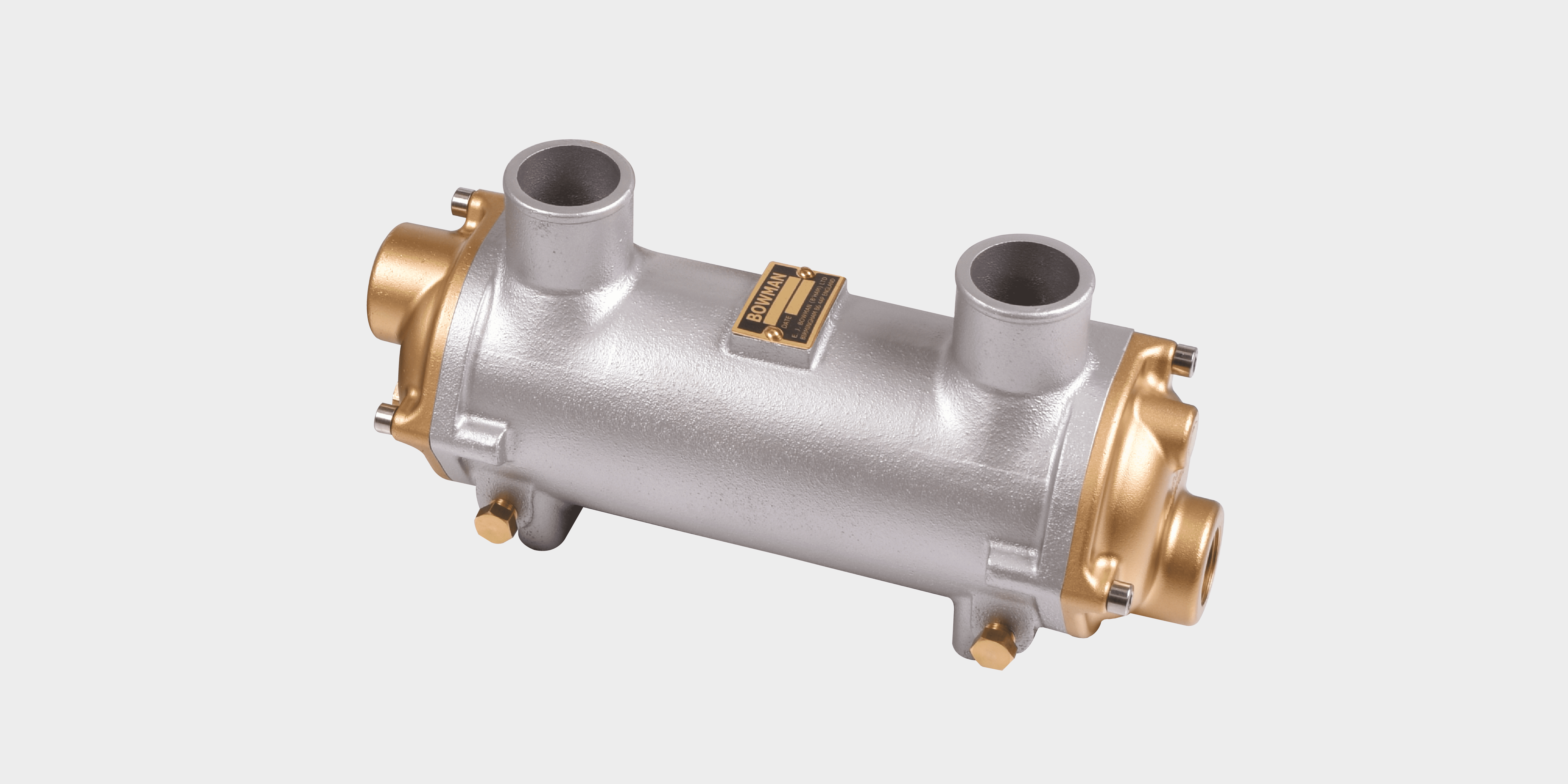
Used to cool the hot, compressed air from the turbo before it reaches the engine, the intercoolers improve engine efficiency and reduce emissions for marine and land-based stationary engines.
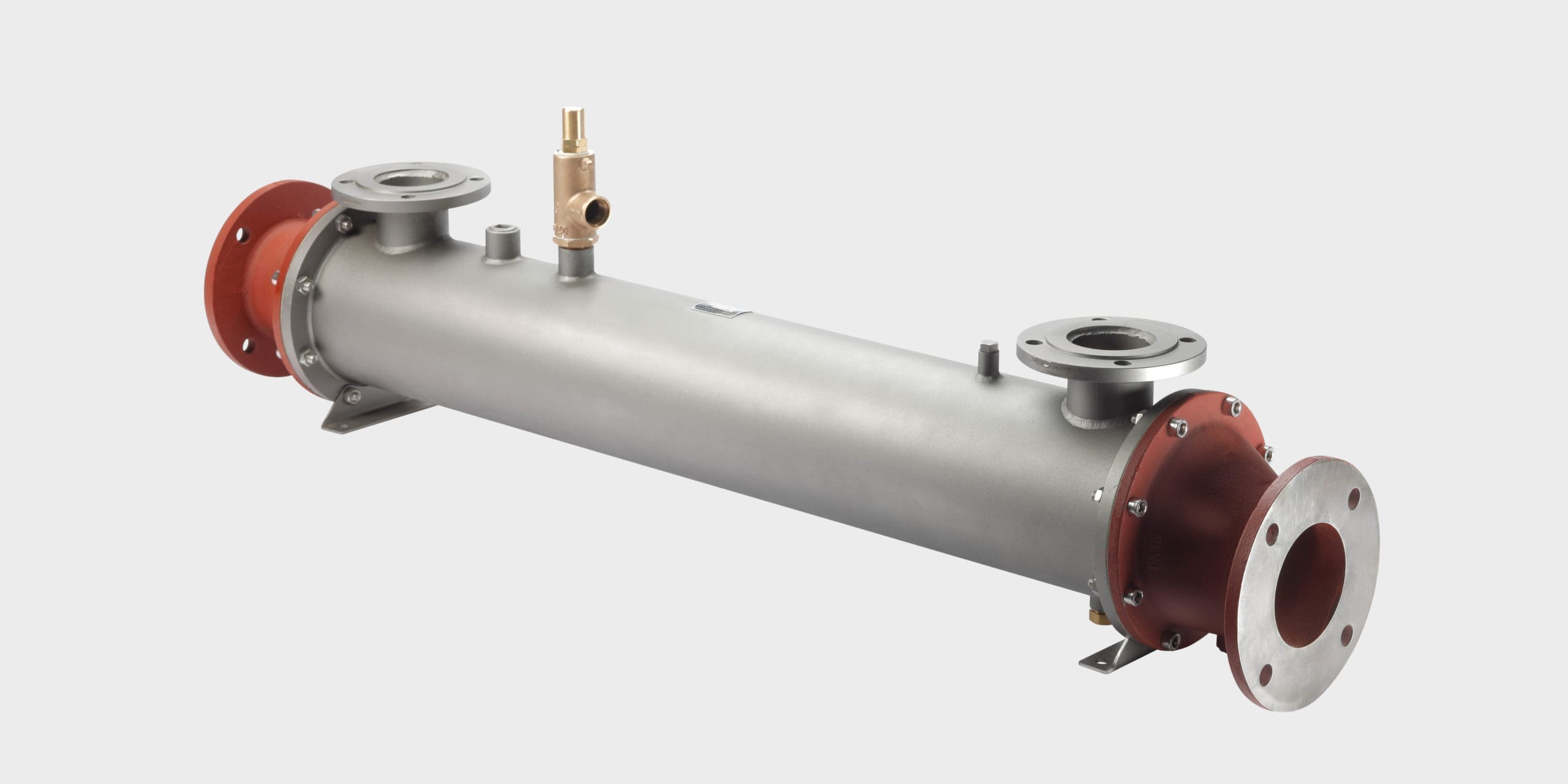
Exhaust gas heat exchangers are designed to recover waste heat energy from the exhaust stream of reciprocating engine powered generating sets.
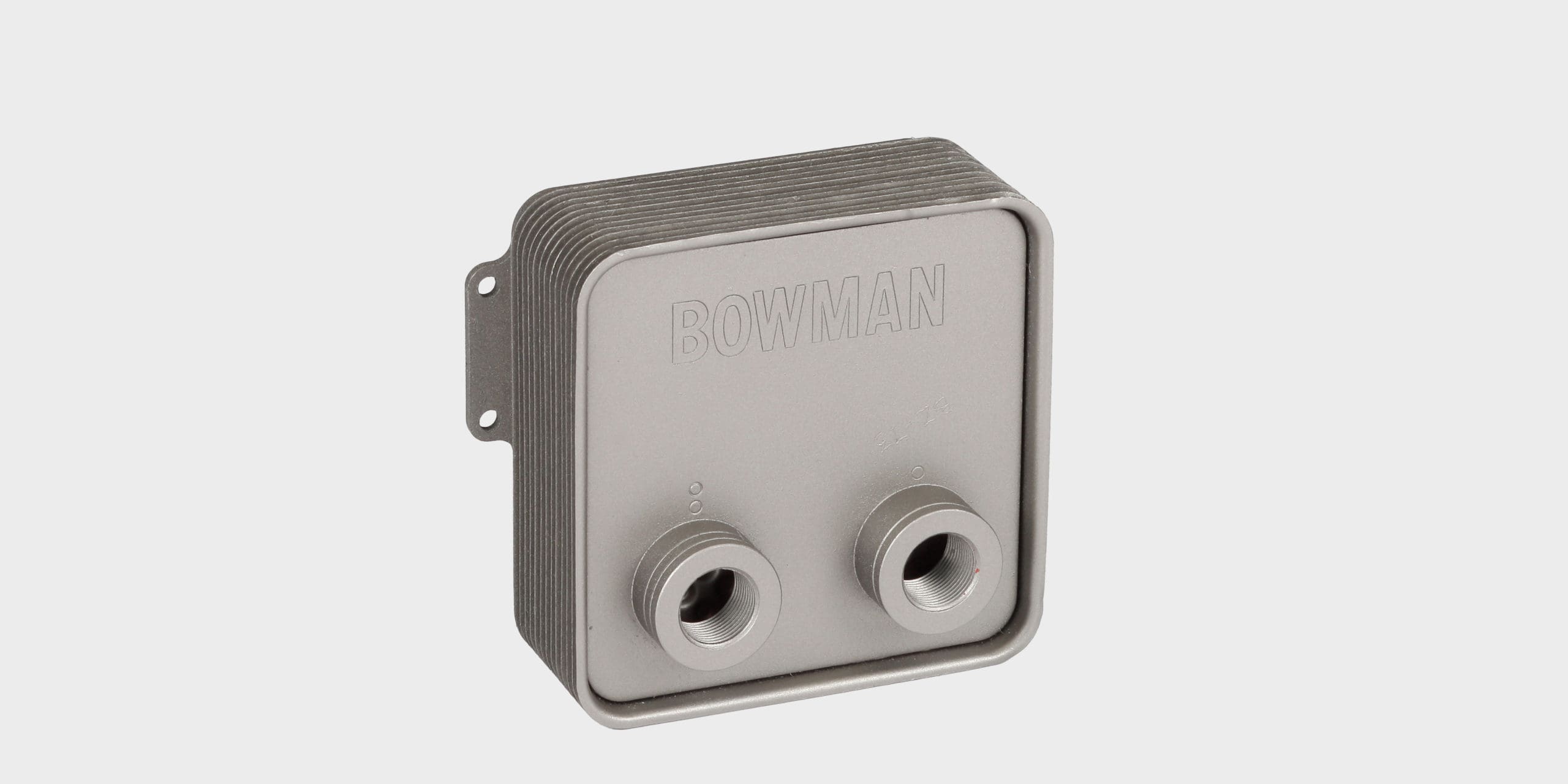
Bowman 'copper free' fuel coolers are compact, highly efficient heat exchangers suitable for fuel conditioning rigs in the automotive testing industry.
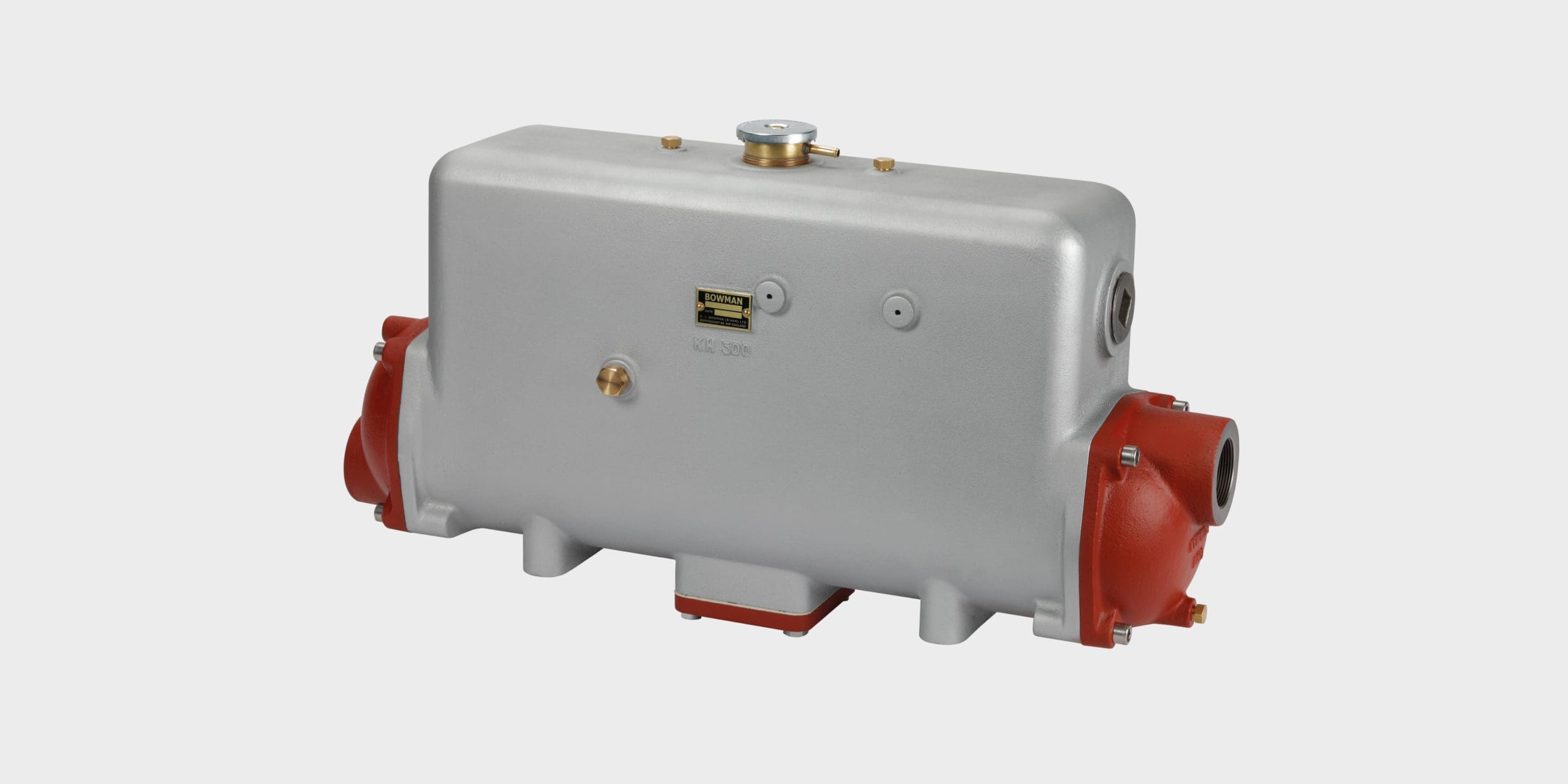
Engine coolant header tank heat exchangers for marine propulsion, gensets or stationary land-based engines.

Bowman EC 80-5113-1T heat exchangers provide a new solution for heating spas and hot tubs in just a fraction of the time taken by traditional electric heaters.
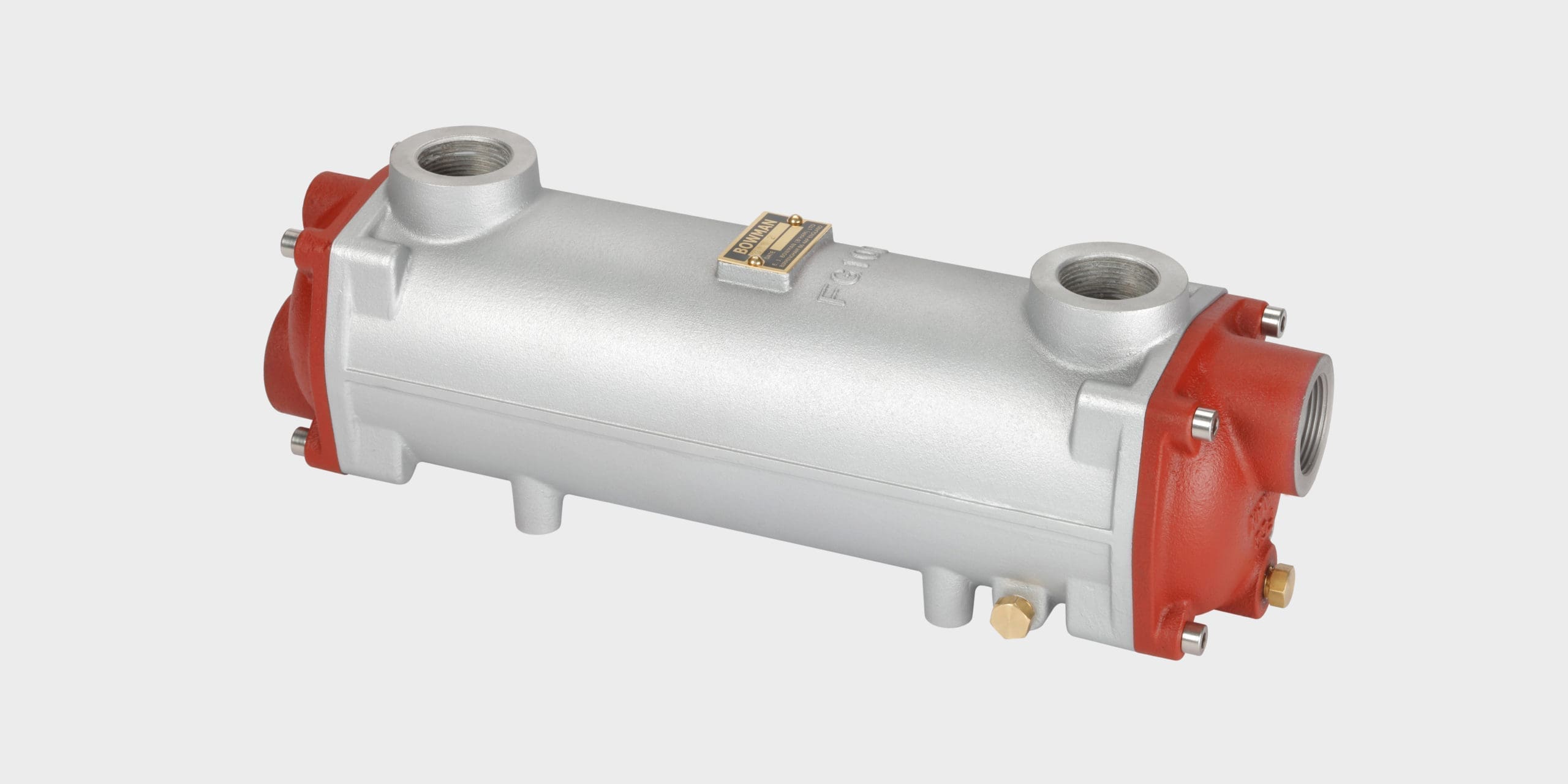
Highly efficient heat transfer solutions for cooling marine, land-based and underground hydraulic systems.

Bowman inline plate heat exchangers are a compact, economical solution for high efficiency heat transfer.

Bespoke cooling solutions for a range of popular marine engines from major OEMs, including coolant heat exchangers, charge air coolers, plus combined heat exchangers and exhaust manifolds, suitable for cooling marine engines up to 1 MW.
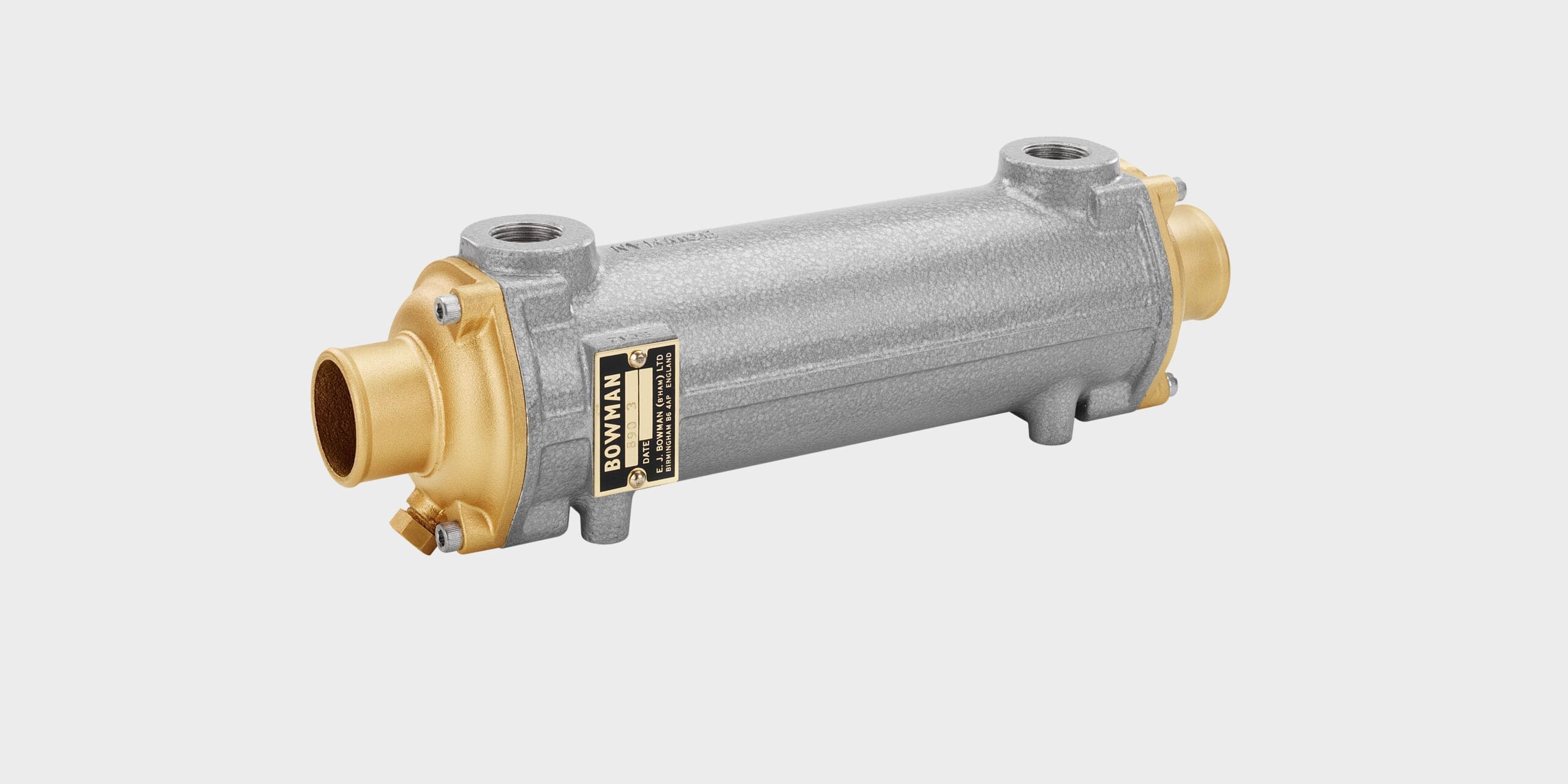
Bowman has a range of highly efficient oil coolers designed for marine and industrial engines and transmissions.

Efficient heat exchangers for cooling electric marine motors, hydrogen fuel cells, battery packs, chargers, AC-DC converters, DC-DC converters, inverters and associated equipment for electric and hybrid marine propulsion and charging systems.
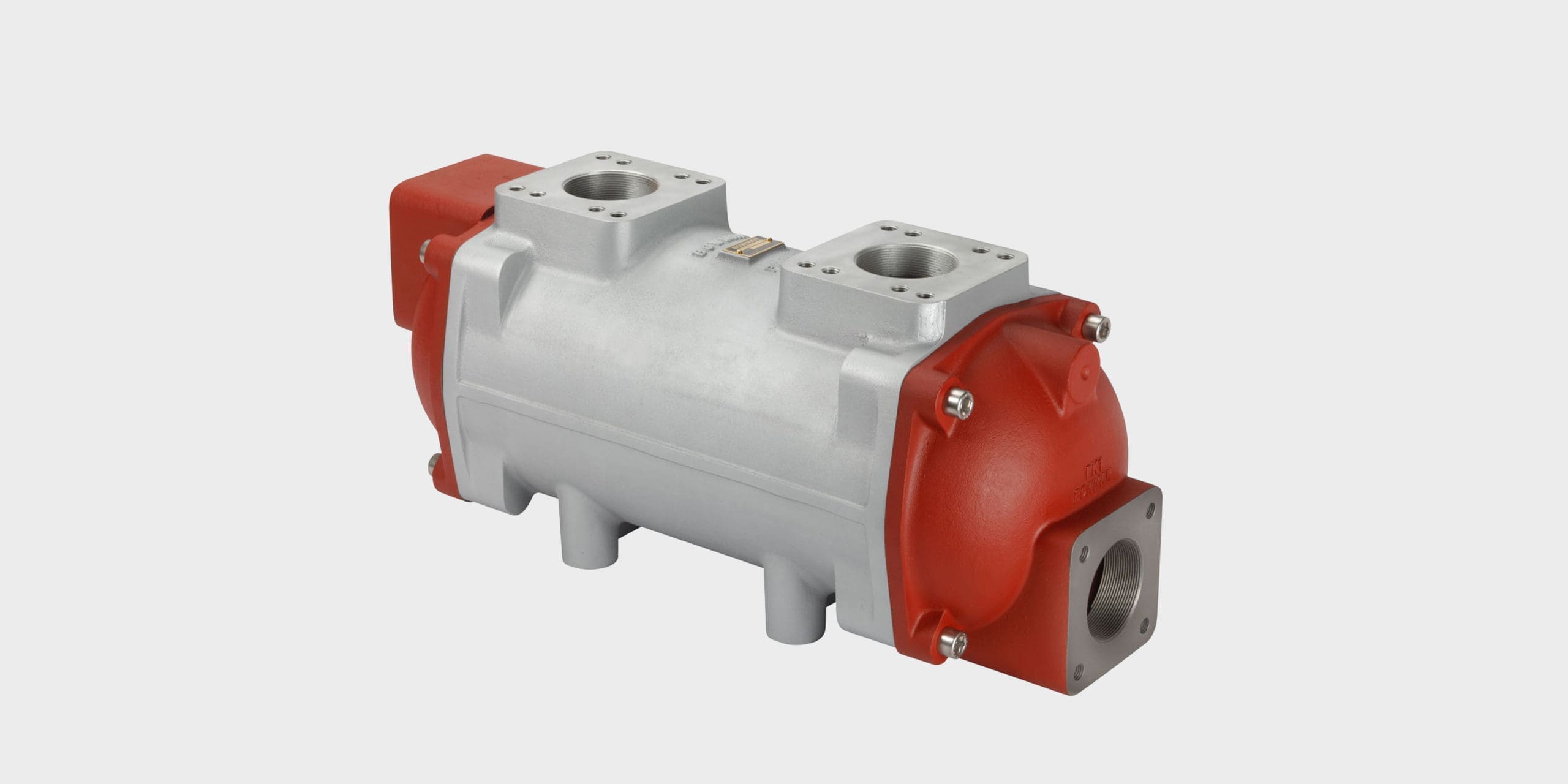
Highly efficient heat transfer solutions for cooling a variety of applications where air and fluids need to be cooled by fluids.
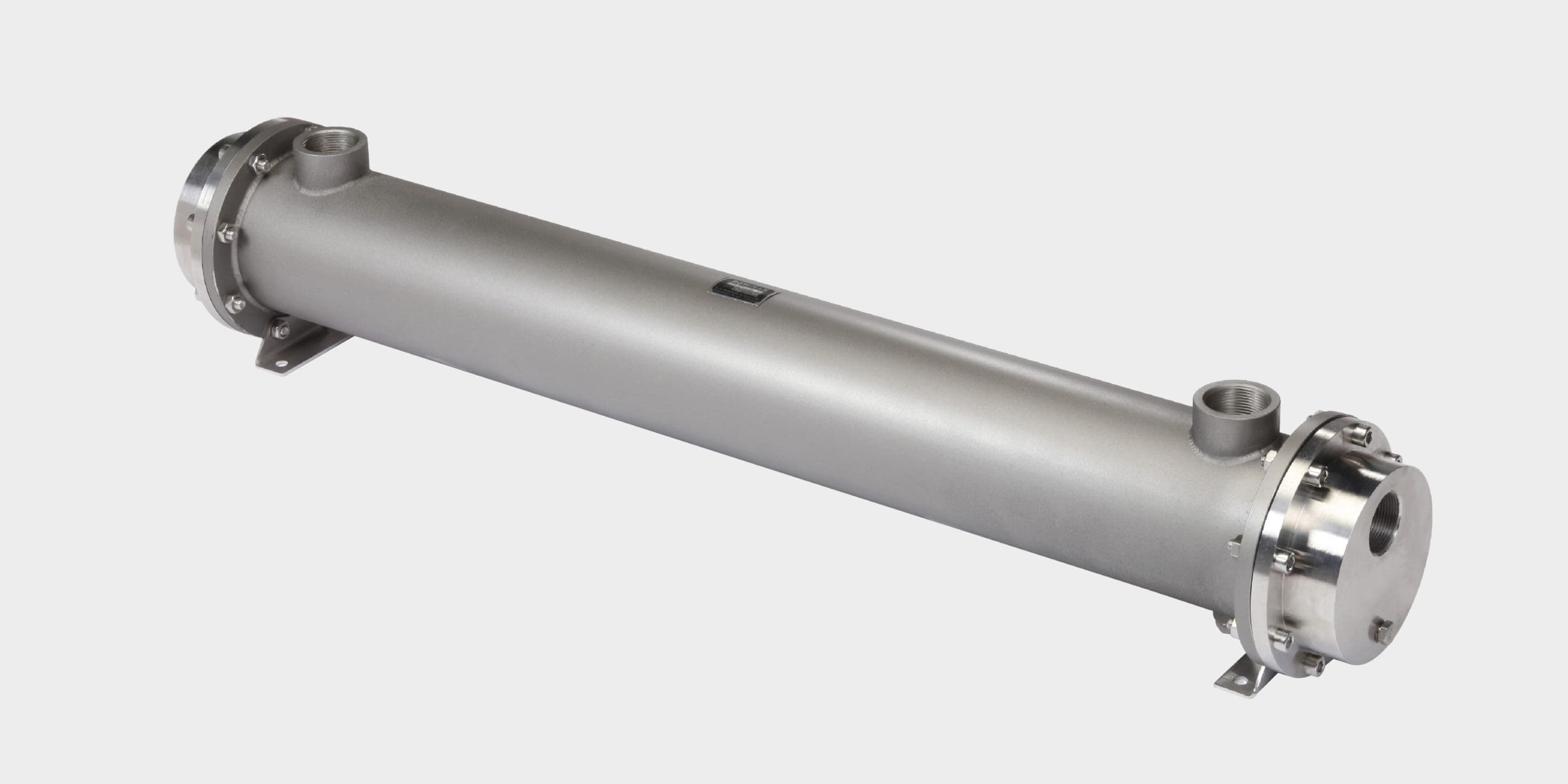
Many applications require stainless steel shell and tube heat exchangers and Bowman provide a standard range of units that are suitable for cooling or heating a variety of fluids.
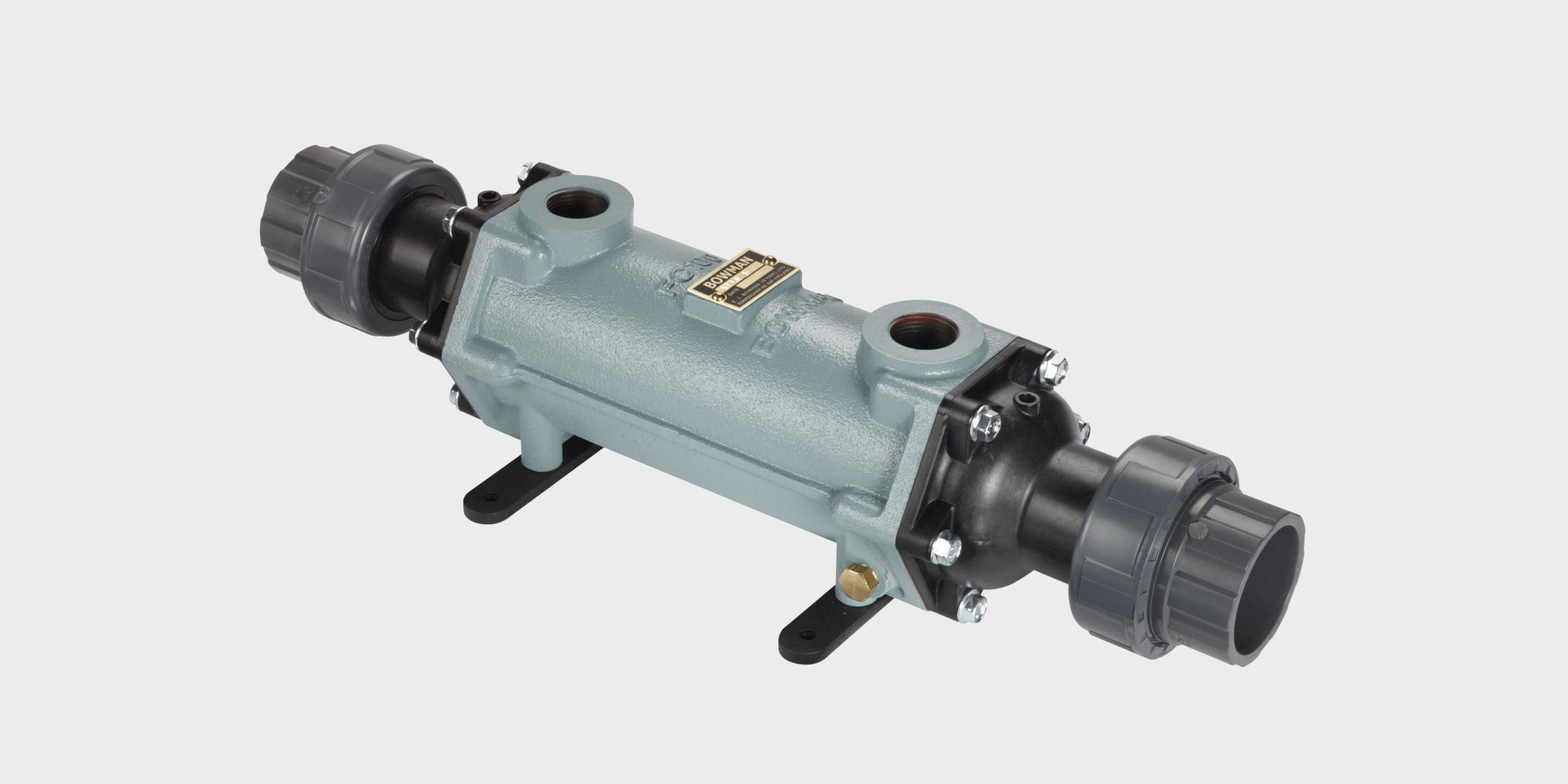
Bowman swimming pool heat exchangers are renowned for reliability and efficiency. Whether heating your pool with a traditional boiler or a renewable energy source, Bowman is the obvious choice.

Premium quality heat exchangers and oil coolers for precise temperature control of engines under test cell development conditions.
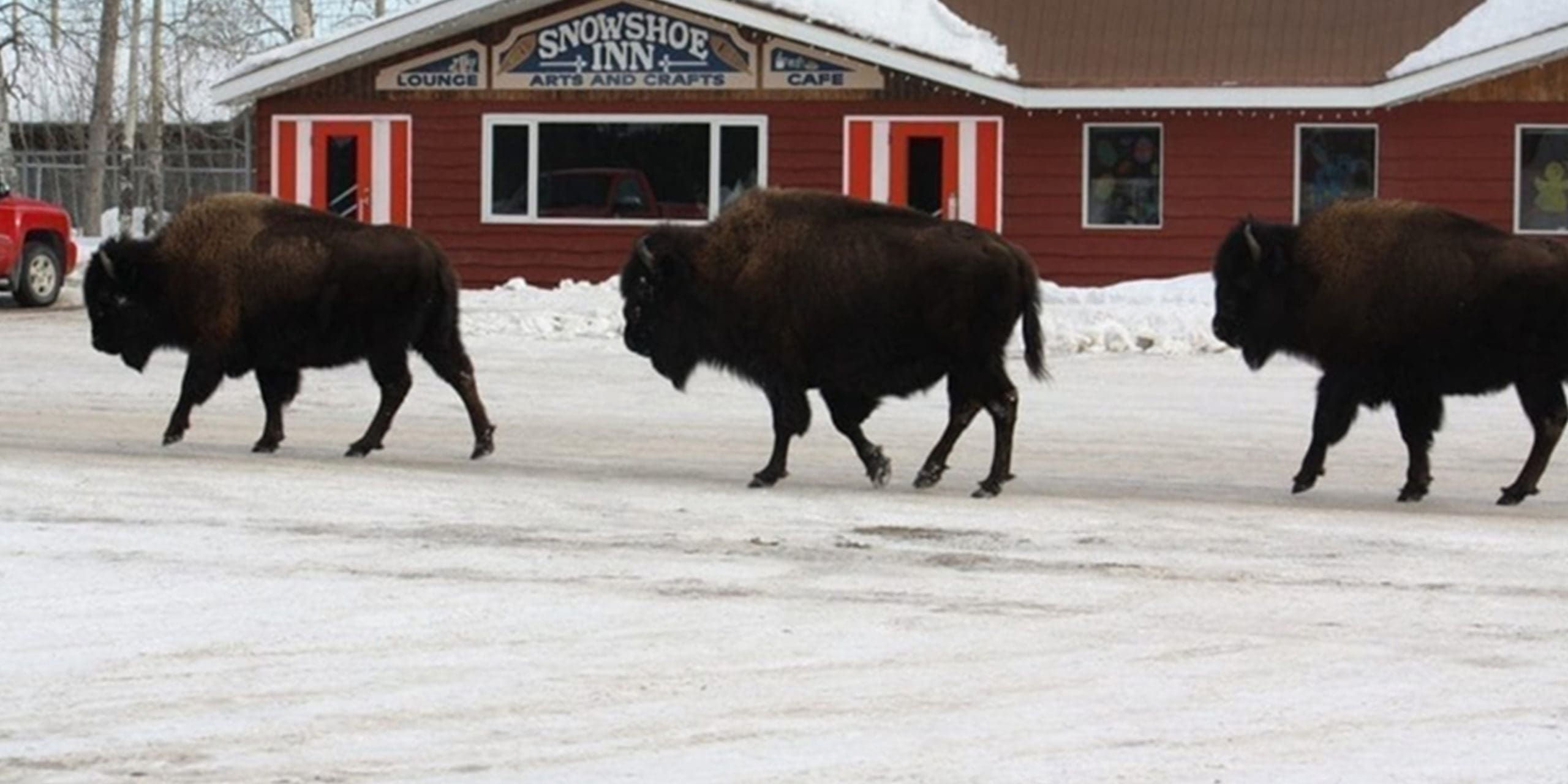
Recovering waste heat energy from engine powered generating sets for biogas, diesel and natural gas applications up to 1 MW.
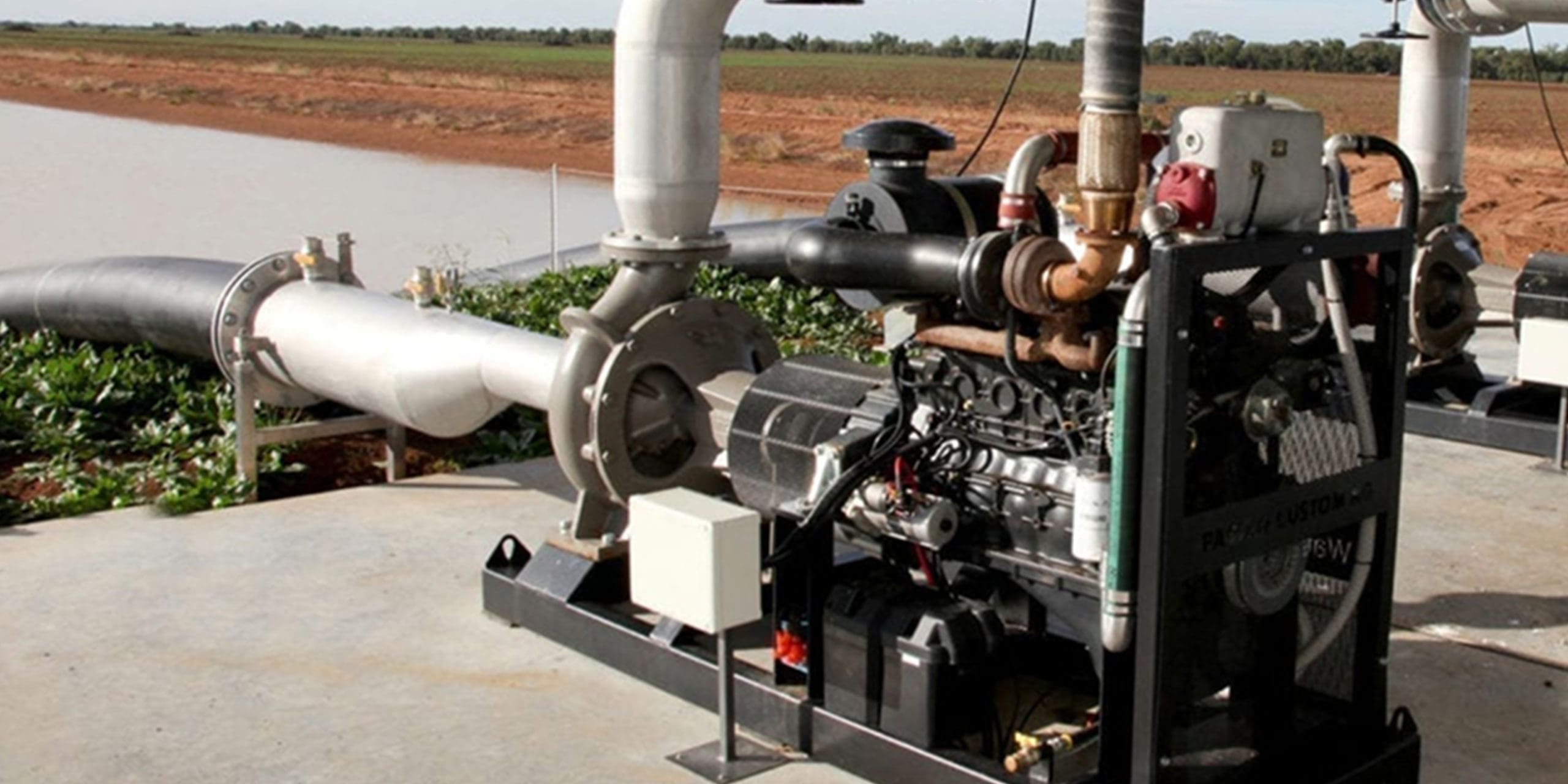
Efficient cooling for stationary / land-based engines where air cooling is either unavailable or inappropriate.
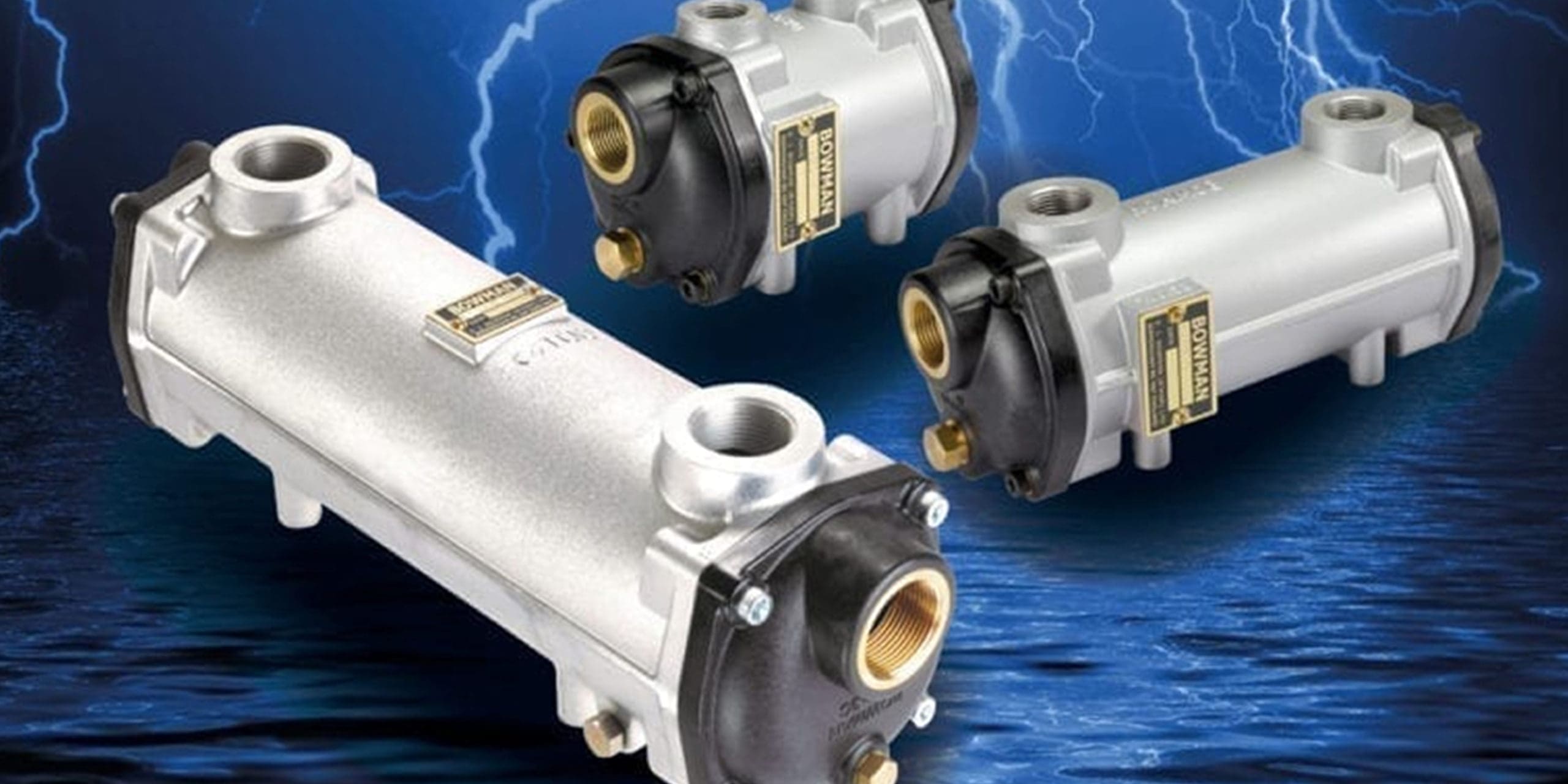
The reliable solution for cooling Electric & Hybrid Marine Propulsion Systems.
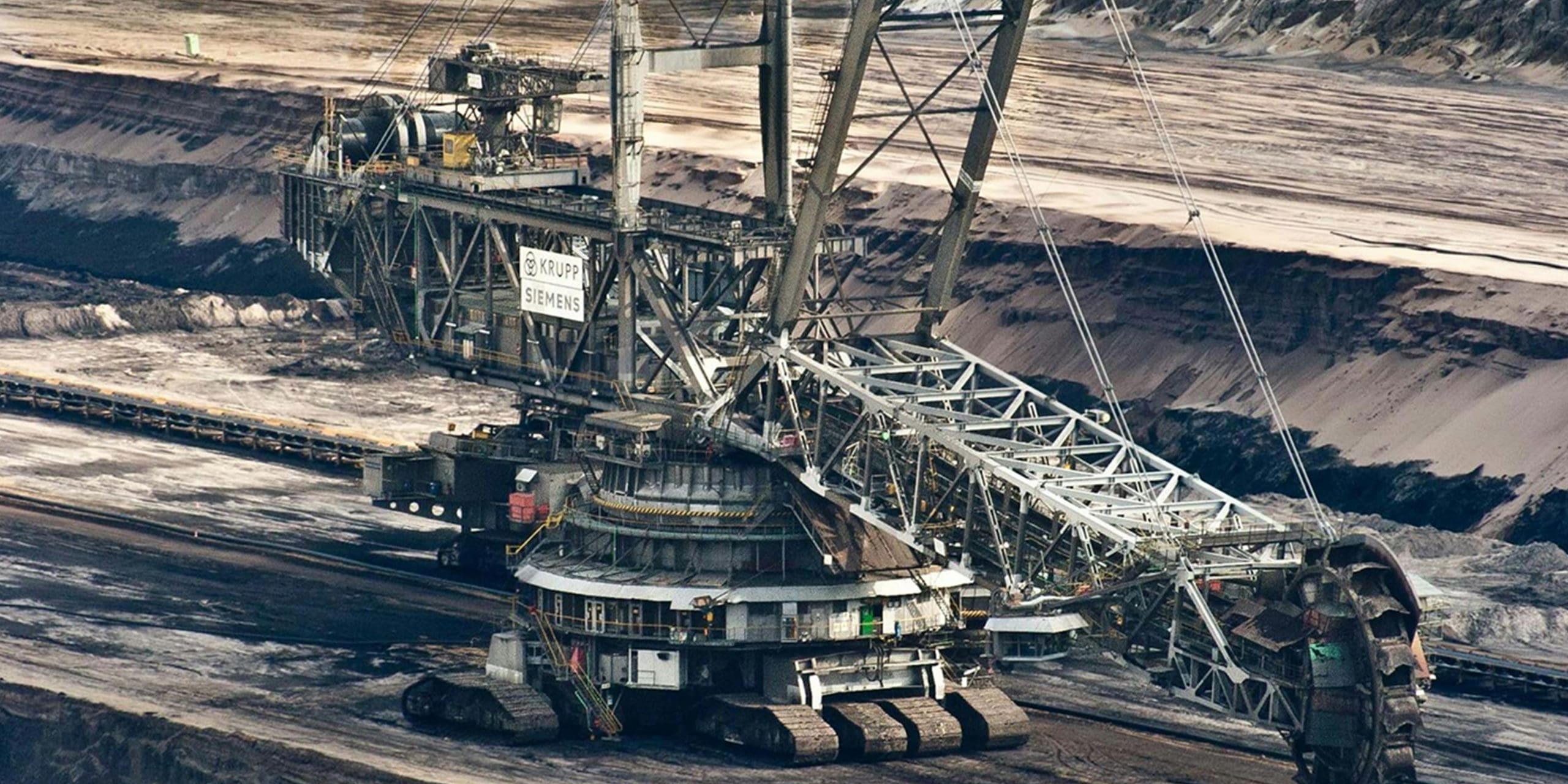
A comprehensive oil cooling solution for industrial hydraulic control systems, plus high temperature and mining applications.
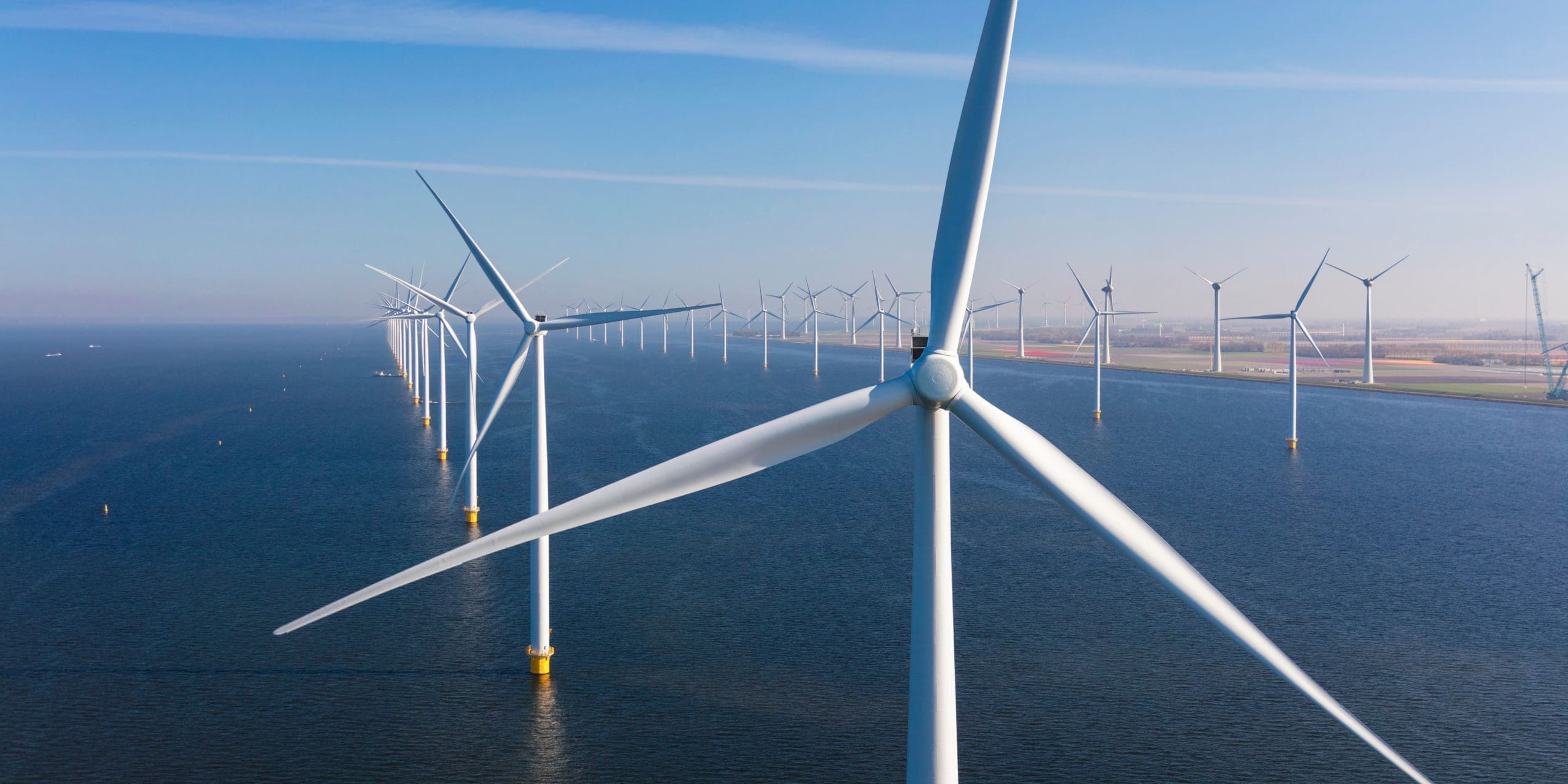
A complete solution for cooling complex on-board hydraulic equipment, including thruster and stabiliser systems.
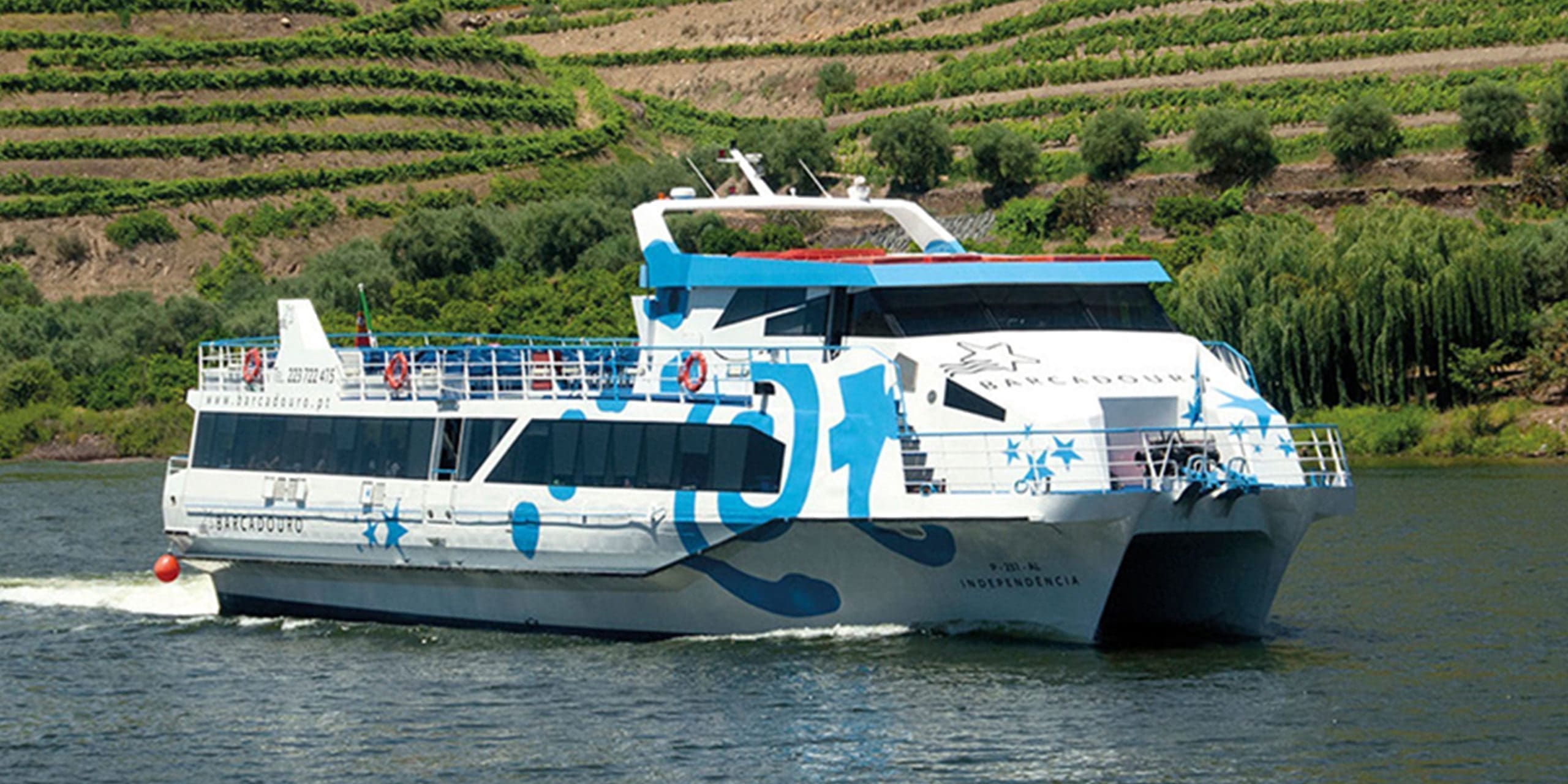
The complete cooling solution for marine engine propulsion, including the latest electric and hybrid systems.
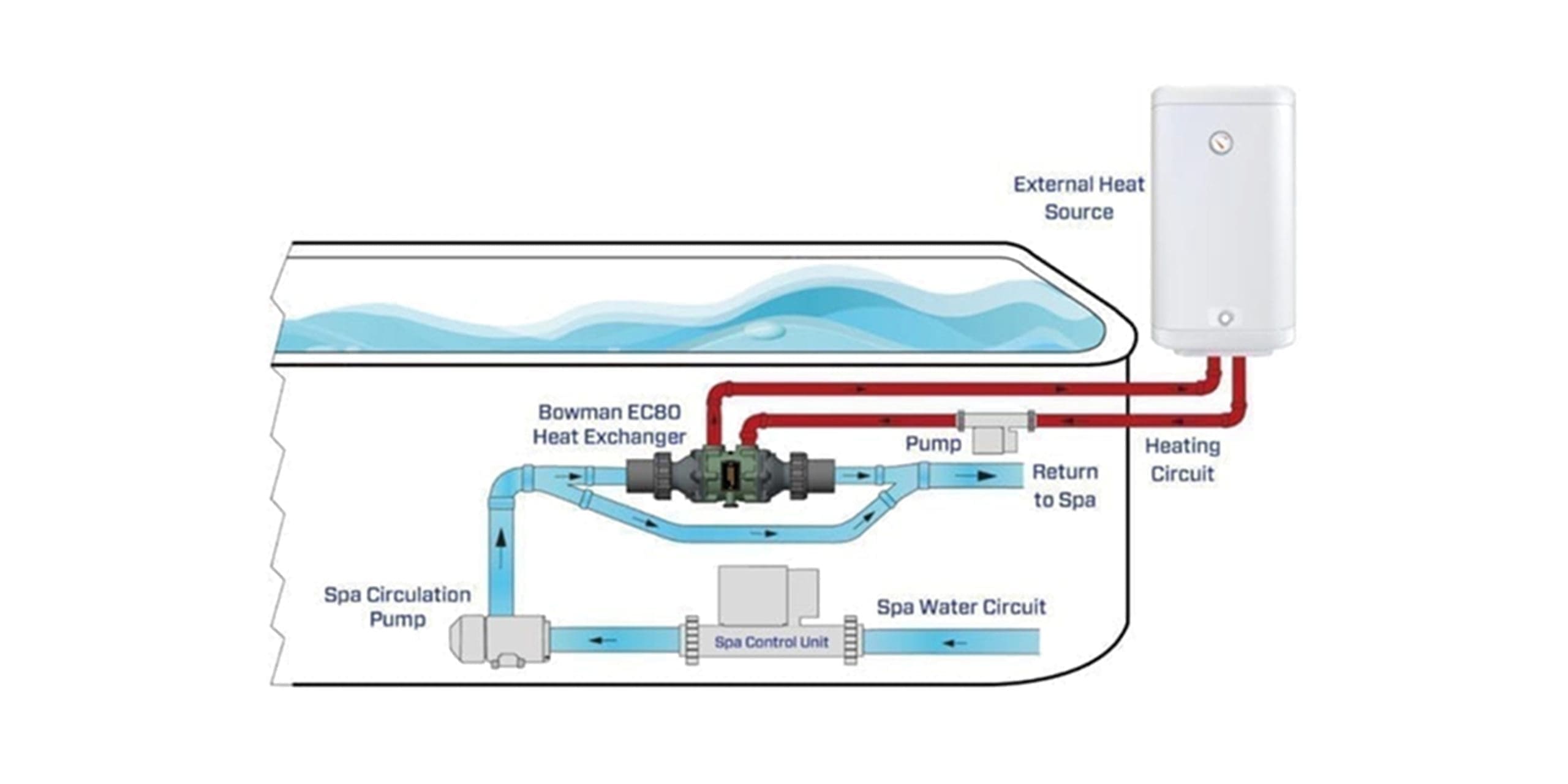
An energy efficient solution for heating hot tubs and swim spas faster, significantly reducing heat-up time for guest change-over periods.

Quality heat exchangers for efficient swimming pool heating, using boiler or renewable energy heat sources.

‘’Why are Bowman heat exchangers so efficient?’’ and ‘’How can such a small heat exchanger possibly heat a pool this size?’’ These two questions are often asked and the answer is really simple.
Bowman have been making heat exchangers for over 100 years and around 50 years for swimming pool heat exchangers, so it will come as no surprise that during that time they’ve learned a thing or two about heat transfer technology. And putting this knowledge into practice is what’s helped make our swimming pool units so efficient.
If you take a selection of heat exchangers from different manufacturers, externally they may look similar, but when you look inside, the differences quickly become apparent.
As an example, if you take a Bowman unit apart, you’ll find a tube bundle packed so tightly with tubes, that all the available space is used to accommodate them. This gives the largest possible surface area for heat to be transferred to the pool water.
Unfortunately, when you open up many competitor units, the tube density is significantly less, so there’s much less surface area, which results in slower heat-up times, requiring more energy to be used to achieve temperature. Installers often have to fit more expensive, larger units just to achieve the performance of a smaller Bowman unit.
But that’s not all. Inside the Bowman unit, the tubes are contained by a series of ‘baffle plates’, which not only hold the tube bundle securely in place, but are also designed to ensure the heating water flows efficiently around and through the tube bundle, by a combination of surface area, turbulence (for efficient heat transfer) and flow (pressure drop).
So, choosing the right heat exchanger for your pool or spa is very important as it will directly affect the running costs and energy efficiency, reducing the time it takes to bring the pool up to temperature, giving faster pool or spa availability.
And whilst just one heat exchanger is sufficient for the majority of installations, for large, or multi-pool installations, it is possible to install several units in parallel, enabling one of the units to be isolated for cleaning or maintenance, without losing much heat input to the pool.
Bowman heat exchangers are available in sizes from 20 kW to 1170 kW, covering virtually every pool size, from spas to Olympic pools. They have a maximum operating water temperature of 110 °C and a maximum operating pressure of 6 Bar (87 psi).
Models are available for use with boilers, where supply water is typically 60 °C to 82 °C, plus heat pumps and solar panels. Here, supply water is typically 45 °C to 70 °C, so these units are specially designed with a larger surface area to take account of the lower water temperatures.
One really important issue when installing a heat exchanger is water flow rates. For example, the EC120 is one of Bowman’s most popular models and using 82 °C boiler water, it can transfer 73 kW of heat when the hot water flow rate is 70 l/min. However, if the flow rate is reduced to 20 l/min, its heat transfer capability is reduced to just 41 kW – that’s approaching half of the unit’s performance potential, so pool heat-up takes much longer.
The amount of times we take calls from installers complaining the heat exchanger is faulty because it’s not getting the water up to temperature. When we ask them to check the boiler water flow, we find it’s been turned right down. By setting it to the correct flow rate, the problem is resolved and the pool heats up quickly!
Bowman also recommend the heat exchanger is installed in a ‘counterflow’ arrangement i.e. the boiler water flows in the opposite direction to the pool water, for maximum efficiency, with the unit installed downstream of the pumping and filtration equipment.
A thermostat should be installed on or near the pool water inlet of the heat exchanger and most Bowman units have a 7 mm integral thermostat pocket provided to make this easier.
Dosing systems should be installed downstream from the heat exchanger to avoid damage from chemicals.
Installing our EC heat exchangers is quite straight forward, as they are supplied with ‘Universal Fit’ end covers, specially designed to accommodate either 1.5” nominal pipe (48 mm O/D), or metric 50 mm O/D pool pipework. The FC range has the same design but uses slightly larger 2″ / 63 mm connections.
Larger units have coated cast iron end covers with either 2 ½” or 3” BSP threads, or PN6/10 or 16 flange fittings.
Maintenance is very easy, too. Just remove the screws securing the end cover and the fully floating tube core can be withdrawn for cleaning.
This is significantly quicker than for other types of heat exchanger, such as gasketed plate units, where typically gasket replacement must be carried out every 2 years – a time-consuming and expensive procedure!
Additionally, every gasket has the potential to leak and detection is much more difficult than with a shell and tube unit. Minor repair work must be carried out by skilled labour and the swimming pool can be out of service for long periods of time, whilst the unit is being repaired or cleaned!
But at the end of the day, the most important thing is to get the right heat exchanger for the job and here again Bowman can help. Using the latest computer-aided design software, we have developed a selection programme that enables us to recommend the correct unit for your pool simply by giving us the following information:
Pool capacity; Boiler water temperature; Boiler water flow rate; Swimming pool water flow rate.
Armed with that information, Bowman can provide the most suitable heat exchanger for your requirements, but if you’re unsure of the details, call us to discuss your application further.
‘’Why are Bowman heat exchangers so efficient?’’ and ‘’How can such a small heat exchanger possibly heat a pool this size?’’ These two questions are often asked and the answer is really simple.
Bowman have been making heat exchangers for over 100 years and around 50 years for swimming pool heat exchangers, so it will come as no surprise that during that time they’ve learned a thing or two about heat transfer technology. And putting this knowledge into practice is what’s helped make our swimming pool units so efficient.
If you take a selection of heat exchangers from different manufacturers, externally they may look similar, but when you look inside, the differences quickly become apparent.
As an example, if you take a Bowman unit apart, you’ll find a tube bundle packed so tightly with tubes, that all the available space is used to accommodate them. This gives the largest possible surface area for heat to be transferred to the pool water.
Unfortunately, when you open up many competitor units, the tube density is significantly less, so there’s much less surface area, which results in slower heat-up times, requiring more energy to be used to achieve temperature. Installers often have to fit more expensive, larger units just to achieve the performance of a smaller Bowman unit.
But that’s not all. Inside the Bowman unit, the tubes are contained by a series of ‘baffle plates’, which not only hold the tube bundle securely in place, but are also designed to ensure the heating water flows efficiently around and through the tube bundle, by a combination of surface area, turbulence (for efficient heat transfer) and flow (pressure drop).
So, choosing the right heat exchanger for your pool or spa is very important as it will directly affect the running costs and energy efficiency, reducing the time it takes to bring the pool up to temperature, giving faster pool or spa availability.
And whilst just one heat exchanger is sufficient for the majority of installations, for large, or multi-pool installations, it is possible to install several units in parallel, enabling one of the units to be isolated for cleaning or maintenance, without losing much heat input to the pool.
Bowman heat exchangers are available in sizes from 20 kW to 1170 kW, covering virtually every pool size, from spas to Olympic pools. They have a maximum operating water temperature of 110 °C and a maximum operating pressure of 6 Bar (87 psi).
Models are available for use with boilers, where supply water is typically 60 °C to 82 °C, plus heat pumps and solar panels. Here, supply water is typically 45 °C to 70 °C, so these units are specially designed with a larger surface area to take account of the lower water temperatures.
One really important issue when installing a heat exchanger is water flow rates. For example, the EC120 is one of Bowman’s most popular models and using 82 °C boiler water, it can transfer 73 kW of heat when the hot water flow rate is 70 l/min. However, if the flow rate is reduced to 20 l/min, its heat transfer capability is reduced to just 41 kW – that’s approaching half of the unit’s performance potential, so pool heat-up takes much longer.
The amount of times we take calls from installers complaining the heat exchanger is faulty because it’s not getting the water up to temperature. When we ask them to check the boiler water flow, we find it’s been turned right down. By setting it to the correct flow rate, the problem is resolved and the pool heats up quickly!
Bowman also recommend the heat exchanger is installed in a ‘counterflow’ arrangement i.e. the boiler water flows in the opposite direction to the pool water, for maximum efficiency, with the unit installed downstream of the pumping and filtration equipment.
A thermostat should be installed on or near the pool water inlet of the heat exchanger and most Bowman units have a 7 mm integral thermostat pocket provided to make this easier.
Dosing systems should be installed downstream from the heat exchanger to avoid damage from chemicals.
Installing our EC heat exchangers is quite straight forward, as they are supplied with ‘Universal Fit’ end covers, specially designed to accommodate either 1.5” nominal pipe (48 mm O/D), or metric 50 mm O/D pool pipework. The FC range has the same design but uses slightly larger 2″ / 63 mm connections.
Larger units have coated cast iron end covers with either 2 ½” or 3” BSP threads, or PN6/10 or 16 flange fittings.
Maintenance is very easy, too. Just remove the screws securing the end cover and the fully floating tube core can be withdrawn for cleaning.
This is significantly quicker than for other types of heat exchanger, such as gasketed plate units, where typically gasket replacement must be carried out every 2 years – a time-consuming and expensive procedure!
Additionally, every gasket has the potential to leak and detection is much more difficult than with a shell and tube unit. Minor repair work must be carried out by skilled labour and the swimming pool can be out of service for long periods of time, whilst the unit is being repaired or cleaned!
But at the end of the day, the most important thing is to get the right heat exchanger for the job and here again Bowman can help. Using the latest computer-aided design software, we have developed a selection programme that enables us to recommend the correct unit for your pool simply by giving us the following information:
Pool capacity; Boiler water temperature; Boiler water flow rate; Swimming pool water flow rate.
Armed with that information, Bowman can provide the most suitable heat exchanger for your requirements, but if you’re unsure of the details, call us to discuss your application further.

Bowman CHP heat exchangers provide vital heating for the Halley VI Antarctic research station.

If you can’t stand the heat – get a Bowman heat exchanger! How Bowman heat exchangers have solved a major cooling headache for a Portuguese river cruising company.

Bowman heat exchangers are delivering 21st century reliability and efficiency to an historic open air pool complex in South Wales.

A new ‘closed loop’ grain drying system, using Bowman heat exchangers has significantly reduced energy costs and improved efficiency in Finland.

Bowman CHP heat exchangers provide vital heating for the Halley VI Antarctic research station.

If you can’t stand the heat – get a Bowman heat exchanger! How Bowman heat exchangers have solved a major cooling headache for a Portuguese river cruising company.

Bowman heat exchangers are delivering 21st century reliability and efficiency to an historic open air pool complex in South Wales.

A new ‘closed loop’ grain drying system, using Bowman heat exchangers has significantly reduced energy costs and improved efficiency in Finland.